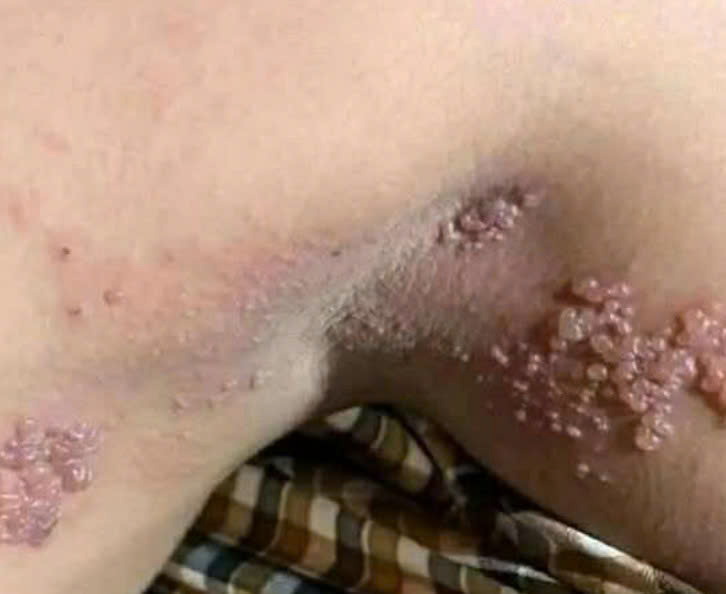It often starts with a moment of surprise—something looks different when you glance down during your daily routine. Maybe it’s a small bump, a red patch, a raised area, or a spot that you’ve never noticed before. Instantly, questions begin racing through your mind: Is this normal? Should I be concerned? Does this mean something serious? These thoughts can feel overwhelming, especially when the change appears in a private area that people rarely discuss openly. But the truth is that skin changes in intimate regions are extremely common, and many of them are harmless.

Even so, it’s important to understand what you’re looking at and when it might be time to reach out to a healthcare professional. Staying informed is one of the best ways to protect your well-being without needless fear or panic. When you know the difference between minor skin irritations and conditions that require medical attention, you empower yourself with clarity—and peace of mind.
One of the first things experts emphasize is this: try not to panic. Not every unexpected bump or mark signals a serious problem. Our daily habits play a major role in how the skin reacts. Shaving, sweating, friction from clothing, and grooming routines can all cause irritation. At the same time, certain skin conditions or infections can also lead to visible changes, some mild and temporary, others requiring treatment. Understanding what’s typical can help you navigate these changes calmly and confidently.
Some of the most common causes of bumps in intimate areas are completely benign. Folliculitis, for instance—often called “shaving bumps”—happens when hair follicles become irritated. These bumps can appear red, white, or slightly filled with fluid. Shaving, tight clothing, and sweat can easily trigger these reactions. Simple care like keeping the area clean, applying a warm compress, and pausing shaving for a few days is often enough for the skin to heal naturally. However, if the bumps grow painful or don’t improve, speaking with a doctor is a wise step.
Sebaceous cysts are another frequent cause of harmless bumps. These are smooth, round growths beneath the skin, created when oil glands become blocked. While they may look concerning, they are usually harmless and often don’t need treatment. It’s important not to squeeze or pick at them, as that can cause irritation or infection. If the cyst becomes painful or inflamed, a medical professional can safely drain or treat it.
Skin tags and ingrown hairs also commonly appear in areas where the skin folds or where hair grows. These bumps can look irritated or unusual, but they’re typically harmless. Friction, tight clothing, and hair growing back into the skin can all cause these minor issues. Still, if something doesn’t look or feel quite right, having a professional take a look can provide reassurance.
While many bumps are not serious, there are situations where medical evaluation is important. Some skin changes can signal infections or chronic skin conditions that benefit from timely treatment. For example, certain strains of HPV can lead to small, soft bumps that may appear individually or in clusters. These bumps typically require treatment to prevent spreading.
Other conditions, such as herpes simplex, may cause painful blisters or sores, sometimes preceded by tingling or sensitivity. These symptoms should be evaluated by a healthcare provider, who can prescribe medications to manage outbreaks and support overall comfort. Molluscum contagiosum, another viral skin condition, leads to shiny, dome-shaped bumps with a small indentation at the center. While it often resolves naturally, it can spread through contact, so speaking with a doctor may help prevent further irritation or transmission.
Some bacterial infections, such as syphilis, can also begin with a single, painless sore in early stages. Although the sore itself may not feel alarming, this condition requires prompt treatment to avoid long-term health complications. Early diagnosis through a healthcare provider ensures proper care and reduces risks.
Chronic inflammatory skin conditions like lichen sclerosus or lichen planus can also cause visible changes. These may appear as itchy white patches or purplish flat bumps. Because these conditions often persist without treatment, professional evaluation is necessary. Prescription medications can help manage symptoms, reduce discomfort, and protect skin health.
Knowing when to seek medical help is essential. You should talk to a healthcare provider if you notice bumps that last longer than a couple of weeks, changes in size or color, persistent pain or burning, unusual discharge, sores that crust or bleed, or anything that repeatedly returns. It may feel uncomfortable to bring up these concerns, but doctors handle these situations every day with professionalism and care. Asking questions early is not only responsible—it can make a meaningful difference in your health.
The most important takeaway is this: pay attention, but don’t panic. Your body experiences changes throughout your life, and many of them are completely normal. Intimate skin changes can be surprising or unsettling, but they are often treatable and manageable once you understand what’s causing them. Avoiding care or staying silent tends to create more stress, whereas speaking up empowers you with information and proper guidance.
Being kind to yourself during moments of uncertainty is just as important as staying informed. Listen to your body, trust your instincts, and remember that professional medical advice is always available when something doesn’t feel quite right. Taking action early, even if it’s simply asking a question, can provide reassurance and protect your long-term well-being.
Disclaimer: This article is for informational purposes only and should not replace professional medical diagnosis or treatment. Always consult your physician or qualified healthcare provider regarding questions about your health, symptoms, or medications. Never ignore medical advice because of something you read online.





